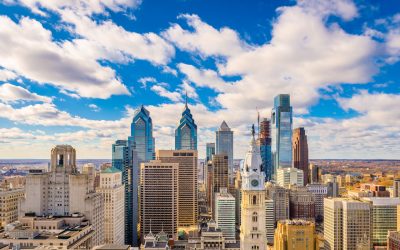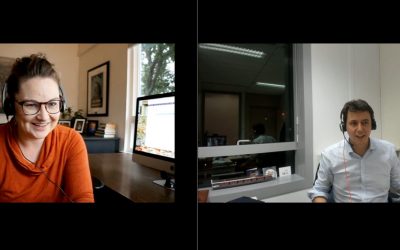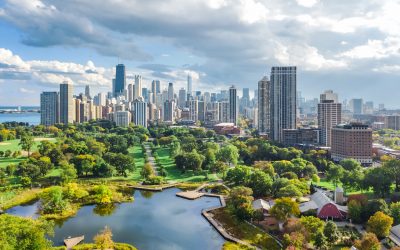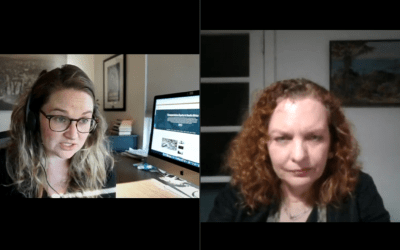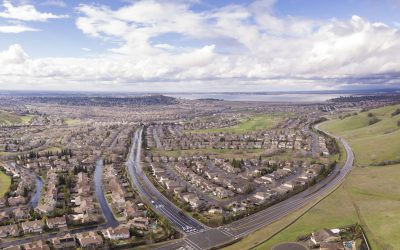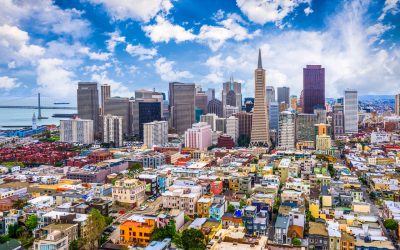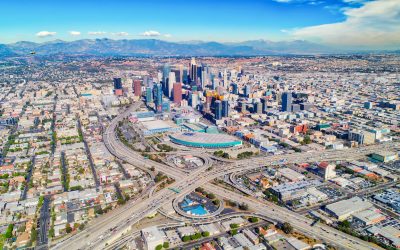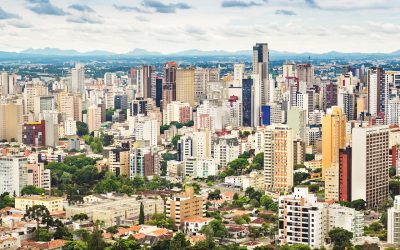COVID-19 Presents an Opportunity to Build Back Stronger Cities
Many cities are leveraging lessons and actions of the COVID-19 crisis to refocus on and drive ambitious sustainability and resiliency strategies. These cities are implementing a “build back better” strategy that ultimately will benefit some of the most vulnerable groups affected by both climate impacts and COVID-19. These strategies can strengthen building infrastructure, create good jobs for those who need them most, and rapidly accelerate cities’ carbon emissions reduction goals.
The work of better, happier cities cannot be implemented by governments or private organizations alone. Regional governments, businesses, banks, and financial institutions must commit to green stimulus and inclusive recovery. These recovery strategies will prioritize jobs and growing the economy, support health and pollution reduction, enhance energy and climate resilience, and support decarbonization, all while focusing on social equity.
Responsive Government: Virtual Twins Help Cities Respond Quickly to Unexpected Situations
The COVID-19 pandemic underlined the need for fast, intelligent, and sophisticated decision-making in government. Now, as cities, states, regions, and nations look to the future, they are harnessing the power of interactive 3D virtual twins to help them plan, develop, and test strategies to support their recovery and build resilience for meeting future crises.
City Digitization Strategies During the Pandemic
I spoke recently with Jacques Beltran from Dassault Systemes about how the crisis has been an accelerator for cities and public agencies to implement digitization strategies. He’s an experienced public servant now working with cities to address their data needs. He shares some relevant examples of how cities in Europe were lagging one to two months behind what was really occurring on the ground. I am particularly impressed by their work to build a virtual twin of the city’s concert hall to simulate coughing, masks, and other conditions to plan a safe reopening. They found some very surprising findings. They also worked at a regional scale to predict and visualize viral spread to anticipate hospital capacity a month ahead – a key tool for regional officials. The use of virtual twins are extensive for cities.
Engaging Historically Marginalized Communities During COVID-19
Since historically marginalized communities are already being disproportionally impacted by the COVID-19 pandemic, I am frustrated to see these communities also negatively impacted by the lack of on-the-ground public engagement. While I realize the threat of COVID-19 and the associated restrictions make conducting on-the-ground public engagement challenging, I want to encourage fellow planners to think more creatively. I will admit that I struggled to think creatively when I first heard that Clackamas Community College (CCC) would continue having mostly online classes in Spring Term 2021. CCC has had mostly online classes since the end of Winter Term 2020 when COVID-19 first started impacting Oregon. CCC’s decision about Spring Term 2021 became more stressful when Clackamas County staff told me that public outreach for their new shuttles could not be delayed until next summer.
If Companies Want a Diverse Workforce, They Need to Pay Attention to Transportation
A new toolkit has been developed to help businesses think through strategies to decrease mobility barriers to the workplace, which reduces turnover. When workers can reliably get to work regardless of their personal circumstances, it provides employment stability and the opportunity to build wealth. It’s a win-win. Developed through a partnership between Metropolitan Planning Council and a pro bono Boston Consulting Group team, the toolkit includes slide decks, an overview report, customizable templates, a cost calculator, and instructional videos walking a company through the thought process of establishing a baseline situation, evaluating and selecting a solution, and standing up a program.
Depending on the employer’s location and employees’ needs, solutions may range from helping with last-mile transportation to the transit system, to developing on-demand vanpools, to establishing in-house carpool matching systems. The ROI calculator gives employers the ability to determine the break-even cost—the subsidy amount a company can manage without hurting the bottom line.
Johannesburg and Maputo Partner to Research Transport Needs and Investments
I caught up recently with Sarah Charlton who is Associate Professor at the School of Architecture and Planning at the University of Witwatersrand in Johannesburg.
The research she is leading, located in both Johannesburg, South Africa and Maputo, Mozambique, looks at the interface between the mobility use by residents and transportation investments by the state. The question guiding her research is “are ordinary households using the transport modes that the government is investing in and prioritizing?” The research is a partnership between two universities across two countries and two cities.
Sarah reflects on research during the pandemic across languages, countries, histories and cultures.
Building Resilience & Addressing Inequities in Small, Underperforming Drinking Water Systems
Unsafe drinking water is an urgent problem that disproportionately affects low‐income communities of color in California and across the U.S. In California, we’ve learned that the right environment and policies inspire stakeholders to come to agreement on prioritizing solutions that provide the best results based on each system’s unique problems. Improving water quality is more than choosing a technical solution. Community alignment and support, political willingness, and mutual agreement are all critical elements that, when combined with the right technical solutions, allow systems to thrive. In parallel with ensuring the right institutional and funding support systems are in place, we also need to choose and implement the most viable technical solutions for each system (which may in turn inform the support systems).
San Francisco Partnering with Community Organizations to Build Green Infrastructure
SFPUC’s Green Infrastructure Grant Program uses green infrastructure to combat CSOs and safeguard its watersheds. Green Stormwater Infrastructure (GSI) installations are engineered stormwater management tools that slow down, clean, and route stormwater to keep it out of a sewer system. Simultaneously, GSI provides native habitat, beautiful landscaping, groundwater recharge, and non-potable water reuse. Through this program, SFPUC encourages landowners to build GSI on their property by providing grants that cover design and construction. “Green stormwater infrastructure is one way that we can invest in our community, efficiently manage rainfall, and ease the burden on the City’s sewer system,” said SFPUC Utility Specialist Sarah Minick.
Balancing Data Privacy and Data Sharing Between TNCs and Cities
Data concerns are not going away. Data sharing and open data initiatives will likely become even more important as the transportation industry grows more interdependent among citizens, public agencies, cities, and private companies. In an internal context, de-identification of data allows data to be shared across an organization, allowing all users to access insights, and a common picture of demand and service performance across the network. This allows marketing, planners, and operations teams within transit agencies to access the same secure data when doing short term and long term planning. This also enables data sharing between agencies and transit operators which have adjacent service areas, and allows them to optimize timetables and typical transfer points. In an external context, de-identification allows for safe data sharing across different public, private, and community stakeholders, and lays the foundation for collaboration, interoperability, and common understanding, while putting privacy first.
Optimization Tools to Help Transit Agencies Recover
I spoke last week with Krishna Desai from Cubic Transportation, and we discussed three big problems facing transportation, and the ways that Cubic is approaching these challenges:
1) If (or when) more workers return to traditional on-location jobs, but feel a lingering distrust of crowded spaces, people who can afford it may opt for private cars instead of using public transit for their commute. This will create a massive influx of cars on roads that were already crowded, and more financial woes for transit agencies already dealing with budget shortfalls. Krishna told me about a suite of optimization tools Cubic is deploying in places like Mexico and San Francisco to make public transit more efficient, more transparent, and, overall, more attractive to riders.
2) For the time being, though, we’re dealing with the opposite problem. How can transit agencies find ways to influence user behavior in a way that complies with social distancing and capacity requirements? How can you incentivize riders to wait for the next bus? (In a way that doesn’t alienate them forever – see #1). Cubic has deployed a loyalty/advertising program in Miami-Dade County that was originally intended to increase ridership, but is now being used to help control crowding and social distancing on transit.
3) Transportation infrastructure, in generally, was not built to accomodate 6-feet of separation between riders – or between workers. Little things like, for example, opening gates, requires workers to be closer than 6-feet to riders, and there are examples like that throughout every transit hub. Technology can help, but creating and implementing software/hardware solutions quickly and efficiently requires experience with innovation, deployment, maintenance and more. Cubic has a program called Project Rebound that shows the possibilities.
Need to Improve Your Transportation Plans? Try Inverting the Order of Planning
Advanced Urban Visioning offers a powerful tool for regions that are serious about achieving a major transformation in their sustainability and resilience. By clarifying what optimal transportation networks look like for a region, it can give planners and the public a better idea of what is possible. It inverts the traditional order of planning, ensuring that each mode can make the greatest possible contribution toward achieving future goals.
Advanced Urban Visioning doesn’t conflict with government-required planning processes; it precedes them. For example, the AUV process may identify the need for specialized infrastructure in a corridor, while the Alternatives Analysis process can now be used to determine the time-frame where such infrastructure becomes necessary given its role in a network.
Life is a Highway: Embracing Intelligent Transportation Systems
The introduction of intelligent transportation systems, which includes a broad network of smart roads, smart cars, smart streetlights and electrification are pushing roadways to new heights. Roadways are no longer simply considered stretches of pavement; they’ve become platforms for innovation. The ability to empower roadways with intelligence and sensing capabilities will unlock extraordinary levels of safety and mobility by enabling smarter, more connected transportation systems that benefit the public and the environment.

